The #SCGINVI didn’t go terribly well for me, but I did manage to 7-1 the Standard portion with B/W Warriors, and now that I’ve played close to 100 matches with the deck, I have quite a bit more to say about it. First, the question of why I chose to play this deck that very few others seem to take seriously. There are two major factors. The first is experience–I started trying the deck, and I liked it, but I didn’t want to commit to playing it in a large event without testing it a lot myself, because it’s harder to be confident that a deck is good when other people aren’t playing it, so you have less evidence of success. Getting the data I needed took a lot of time, so by the time I had it, I just knew the deck much better than anything else. The second is what really drew me to the deck in the first place. There’s nothing I like more than a good role reversal. I try to play decks that have sideboards that allow me to shift my gameplan to do something my opponents won’t expect, and B/W Warriors excels at this.
I’ve written many times about my fundamental principle of sideboarding. I want to present a focused, proactive game 1 deck, and then I want to shift into a controlling position, or at least plan to streamline my interaction and develop a clear strategy in sideboarding. A linear aggro deck is great as far as proactive gameplans in game 1 go, but Chief of the Edge is just not a good game 2 card. That’s not to say I cut it in every matchup, but it’s a card that’s very easy for my opponents to answer in ways that get them ahead–Fiery Impulse leaves them up a mana, Surge of Righteousness or Self-Inflicted Wound leave them up on life, and Radiant Flames leaves them up on cards. I don’t want to have a strategy that has to rely on cards like that, so being able to get away from it is a barrier to entry, but if a deck can pass that barrier, it has my interest.
Paulo recently wrote an excellent article about what distinguishes a great player (including a section from me). In it, he and many of players he interviewed stressed the importance of having a gameplan and of looking at big picture strategy. This weekend, I asked Matthias Hunt what he thought of my technical play, and he answered that he didn’t know, because he doesn’t often see my technical play come up–usually, he just sees me winning by getting a big enough edge in deck building or sideboarding that I just execute my plan, and he doesn’t see whether I know how to make the little decisions well. I avoid midrange decks full of the same good cards everyone else is playing, and in this way, I minimize the importance of my tactical decisions, in order to maximize my strategic edge.
B/W Warriors lets me do that perfectly. In most matches, in game 1, I basically just play out the earlygame–all of my important decisions are sequencing my plays on turns 2-4, and then I have very few resources, and I’m either ahead by enough that I’ve won the game, or I’m not, and I can concede within a turn or two, because I have no hope of recovery after my opponent has gotten ahead on the battlefield with two creatures that are bigger than anything in my deck. In sideboarding, I’m either trying to maximize the chances that they just can’t catch up or I’m trying to sidestep their entire gameplan.
So, let me get into what this actually looks like and how it plays out with a rare detailed matchup guide. First, my decklist from this weekend:
Creatures (24)
- 4 Chief of the Edge
- 4 Bloodsoaked Champion
- 4 Mardu Strike Leader
- 4 Mardu Woe-Reaper
- 4 Blood-Chin Rager
- 1 Kytheon, Hero of Akros
- 3 Wasteland Strangler
Planeswalkers (2)
Lands (24)
Spells (10)

Matchups
VS Abzan Aggro
Your plan is simple: You need to establish a clock and then kill all of their creatures. None of your creatures win in combat against any of their creatures, and if they can get into a good enough position that they can attack, they can raid Wingmate Roc, which is very hard to beat. You can trade with their early creatures, but starting on the third turn, you want to be using a removal spell to answer the creature they played. Because all of your creatures lose to all of their creatures, in general, your smallest creatures are your best creatures, because they make it easiest to get ahead, and the advantage of being bigger is fairly small.
Your Gideons aren’t very good because they can kill it by attacking with Anafenza, the Foremost if they have a removal spell, Warden of the First Tree if they have Dromoka’s Command, or they can just power through with Siege Rhino or Wingmate Roc. Their Gideon is very good because the 2/2 trades with any of your creatures. You need to have four power on the battlefield and a removal spell or Gideon will likely beat you. Again, this just pushes you to want a low curve and interaction so that you can be ahead by four power.
Toward this end, my sideboard plan:
Out (on the play):
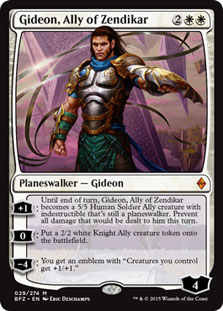

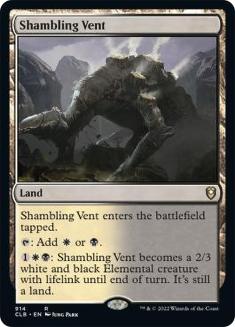
In (on the play):
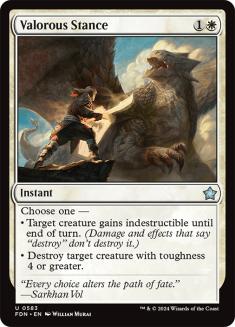

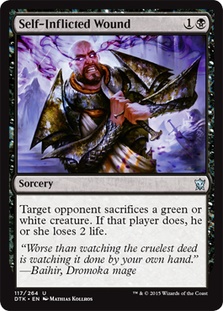
Once you’ve cut your four-drops, you can afford to cut a land. Shambling Vent isn’t needed here because it’s generally not powerful enough to win a long game, and this is a tempo matchup more than an attrition matchup if you’re winning.
On the draw, same as above, but cut two Mardu Strike Leaders for Disdainful Stroke. On the play, turn 3 Mardu Strike Leader is great. They either have to take their turn off killing it, which is fine if you’re ahead, or they play a creature, and then when you kill it and attack on turn 4, you get way ahead. On the draw, playing it after they play Anafenza is terrible, and it gives your opponent a window to play a Gideon and lock up the game. You’d much rather just pass with Disdainful Stroke on turn 3.
VS Atarka Red
This is the only deck that gets under you, and you have to become a control deck against them. Game 1, your deck isn’t well set up to do that, so you often just have to try to race them and usually lose.
Out:
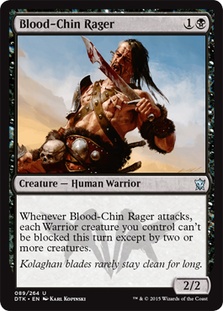



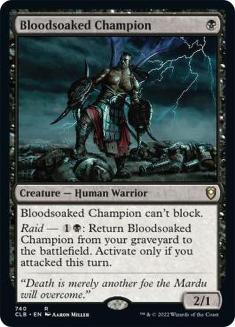





In:
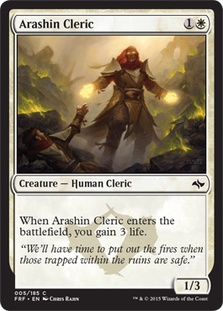

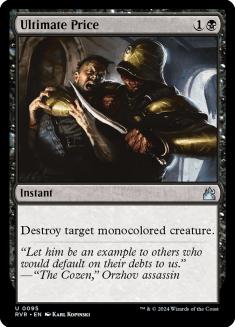

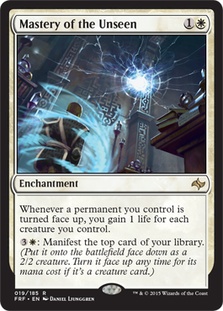



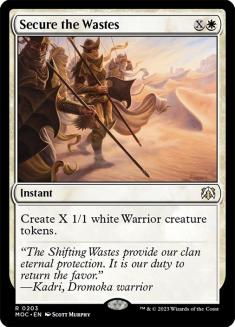

Against R/G Landfall, leave Valorous Stance over Secure the Wastes, maybe add Self-Inflicted Wound over Negate.
VS Jeskai Black
They believe that they’re the control deck and have inevitability, so they just try to maximize their removal, especially since you’re generally too fast for them in game 1. This means you can’t get multiple creatures on the battlefield to take advantage of Warrior synergies.
Out:




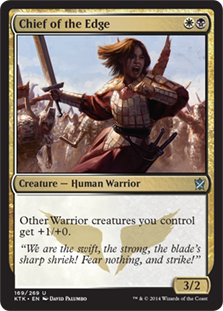





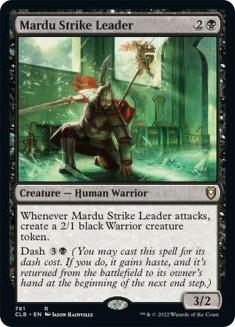
In:









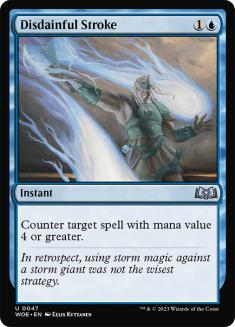

In general, you want to hold Mardu Strike Leader to dash if they tap out, rather than letting them kill it. You cut one because you don’t want a hand full of them if you’re playing this way. By having good answers to their threats and resilient threats of your own, you tend to win games of attrition, and thanks to Mastery of the Unseen, I often win thirteen+ turn games after my opponent resolves multiple Dig Through Times. I think you’re a huge favorite here because you’re advantaged at all stages of the game.
VS Esper Dragons
This is like Jeskai Black except their removal is clunkier and they have more counterspells, which are pretty bad. Their lategame is stronger, as they tend to have more sweepers and Ugin, the Spirit Dragon, so there’s more pressure to kill them early, but it’s easier to do that.
Out:
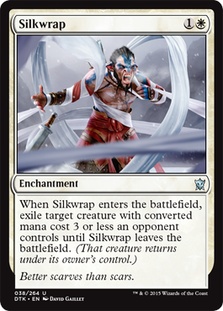



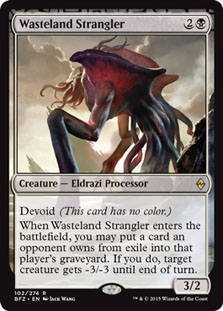





In:










I’m not completely sure about the details here. Ultimate Price might be better than the fourth Blood-Chin Rager or the fourth Valorous Stance so that you have more answers to Jace. It’s better than Silkwrap because it’s an instant, they tend not to have Ojutai’s Command, you’re cutting your Wasteland Stranglers, it can kill Tasigur, the Golden Fang, and it doesn’t have the Ugin problem.
VS Eldrazi Ramp
You’re basically just too fast for them most of the time. They have a chance if they have sweepers.
The sideboarding here is weird–there are a lot of slightly different ramp decks, and sometimes it’s hard to tell which creatures they play. You want your counterspells, and you want to leave all the Warriors in so that you can kill them quickly. You generally cut Wasteland Strangler and some removal. If removal is good against them, Gideon can be cut, since it’s fairly slow. If removal’s all very bad, Secure the Wastes and Mastery of the Unseen can be added as additional pressure. You often want Secure the Wastes.
VS Four-Color Rally
This matchup is horrible. The problem isn’t their combo, since you can often exile their creatures. The problem is that their bodies naturally line up well against yours, and their curve is such that you can’t meaningfully get ahead. I’m reasonably confident, despite not having played it much, that devoting additional sideboard slots to the matchup didn’t address the fundamental problems, and it’s best to just hope to dodge them or get very lucky.
Out:


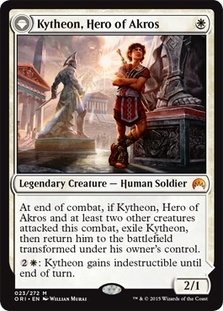

In:




You’re basically just hoping they somehow stumble, or maybe that you can make an emblem and that that will let you keep attacking.
VS Temur Black
This is fundamentally similar to Abzan; they’re an aggressive creature deck with larger creatures than you. You don’t want cards like Mastery of the Unseen or Secure the Wastes because your opponent doesn’t give you enough time and the small creatures don’t matter enough. This matchup is worse than Abzan because their removal is better against you. Fiery Impulse is the best spot removal spell against your deck, since it kills anything for one mana, and Radiant Flames is a huge problem. I’ve lost to this deck several times, and it’s another pretty tough matchup, though you certainly can win.
Out:







In:







Fiery Impulse isn’t that big of a deal, and your removal spells are great against their creatures–getting to bring in Ultimate Price is very nice, but it’s hard to win if they cast Radiant Flames.
VS Mardu
This is very similar to Jeskai Black, but you sideboard a little differently because Valorous Stance is often good. The same basic principles apply to how you approach the matchup, but Pia and Kiran Nalaar is a good card against you, which makes this often more annoying than Jeskai.
Out:











In:











This is more approximate than some of the others. There are a range of Mardu strategies, and you often won’t really want the counterspells, in which case it’s fine to add more removal or increase the number of Mardu Strike Leaders you’re playing. They’re not bad as long as you use them carefully.
That covers the major matchups I see these days. I think the deck is good, and I’d recommend if for any Standard tournament where you don’t expect to play against a lot Catacomb Sifters.

